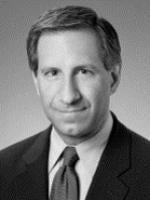In IBEW Local 98 Pension Fund v. Best Buy Co., Inc., No. 14-3178 (8th Cir. Apr. 12, 2016), the United States Court of Appeals for the Eighth Circuit held, in a Rule 10b-5 securities fraud action, that the district court incorrectly analyzed the price-impact evidence submitted by defendants to rebut the fraud-on-the-market presumption of reliance that plaintiffs had invoked to satisfy Rule 23(b)(3)’s predominance requirement. Two years ago, the U.S. Supreme Court, in Haliburton Co. v. Erica P. John Fund, Inc., 134 S.Ct. 2398, 2414-16 (2014) (Halliburton II), recognized a defendant’s right to rebut the presumption using price-impact evidence at the class-certification stage. Based on Haliburton II, the majority panel determined that defendants had submitted “overwhelming” evidence that the alleged misstatement caused no stock price inflation. The panel rejected plaintiffs’ theory that the misstatement could nevertheless have “maintained” the stock’s already-inflated price at the allegedly inflated level. The decision importantly limits the fraud-on-the-market presumption to cases in which the alleged misstatement is the independent cause of new or additional stock price inflation.
On September 14, 2010, Best Buy issued an 8:00 a.m. press release before the stock market opened summarizing its second quarter results and announcing it was increasing its annual earnings per share (EPS) guidance by ten cents to $3.55-$3.70. Best Buy’s common stock, which had closed the day before at $34.65, opened at 9:30 A.M. at $37.25, up 7.5%. At 10:00 a.m., on the same day, Best Buy’s management, while on an analyst conference call, stated that earnings were in line with original expectations for the year and “Overall, we are pleased that we are on track to deliver and exceed our annual EPS guidance.” Best Buy’s stock closed that day at $36.73. It generally continued to rise for three months, closing at $41.70 on December 13. The next day, December 14, Best Buy issued a press release reporting a third-quarter sales decline and announcing a reduction in its EPS guidance to $3.20-$3.40. The stock closed that day at $35.52, down 14.8%.
Plaintiffs alleged that defendants made material misstatements in the press release and on the conference call. The district court, however, found the forward-looking EPS guidance in the press release fell within a safe harbor, and dismissed plaintiffs’ claim based upon the EPS guidance statement. The conference call statements, however, remained actionable. The putative class members moved to certify a Rule 23(b)(3) class and sought to show the predominance of common questions via the fraud-on-the-market presumption. Defendants sought to submit rebuttal proof per Halliburton II.
Defendants’ expert, using an event study, opined that on September 14 all the price inflation occurred after the 8:00 a.m. press release but before the 10:00 a.m. conference call. Plaintiffs’ expert acknowledged that the 10 a.m. conference call statements restated the press release’s “economic substance,” which, by 10 a.m., was already embedded in Best Buy’s stock price. He opined, however, that even though the EPS guidance in the press release was not actionable, investors still relied on it, so that the conference call statements served to “fraudulently maintain[ ]” the inflated price until the “corrective disclosure” on December 14.
The district court agreed with plaintiffs’ expert and certified the class, finding the alleged conference call misstatements “could have further inflated the price, prolonged the inflation of the price, or slowed the rate of fall.” The court added that “price impact can be shown by a decrease in price following a revelation of the fraud,” and defendants “have not offered evidence to show that Best Buy’s stock price did not decrease when the truth was revealed.”
The Eighth Circuit panel reversed, finding that the district court ignored defendants’ compelling rebuttal proof, including that supplied by plaintiffs’ own expert. In its view, the lack of “front-end” price impact following the conference call directly disproved any presumed investor reliance on statements made during that call. Moreover, in the panel’s view, the stock price drop following the alleged December 14 corrective disclosure did not show that the conference call statements “maintained” an already-inflated price or refuted the “overwhelming” evidence attributing the entire September 14 price impact to the non-actionable press release.
The dissent criticized the majority panel’s opinion for ignoring plaintiffs’ central theory that the conference call statements fraudulently “counteracted a price decline that otherwise would have occurred.” According to it, the majority viewed the conference call as adding nothing new to the total mix of information and so decided the Rule 23 predominance issue on materiality grounds, even though materiality is a common question and a materiality examination is improper at the class-certification stage.
The Eighth Circuit’s decision illustrates the importance of Halliburton II and the right of a defendant to rebut the fraud-on-the-market presumption at the Rule 23-stage. As a result of Halliburton II, federal courts must consider price-impact evidence at the class certification stage of a securities fraud case and grapple with what it proves and does not prove.




 />i
/>i

